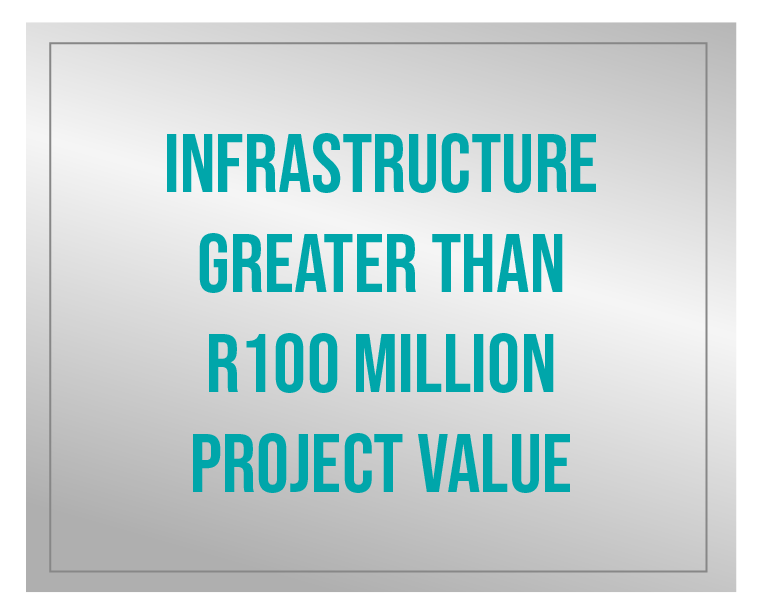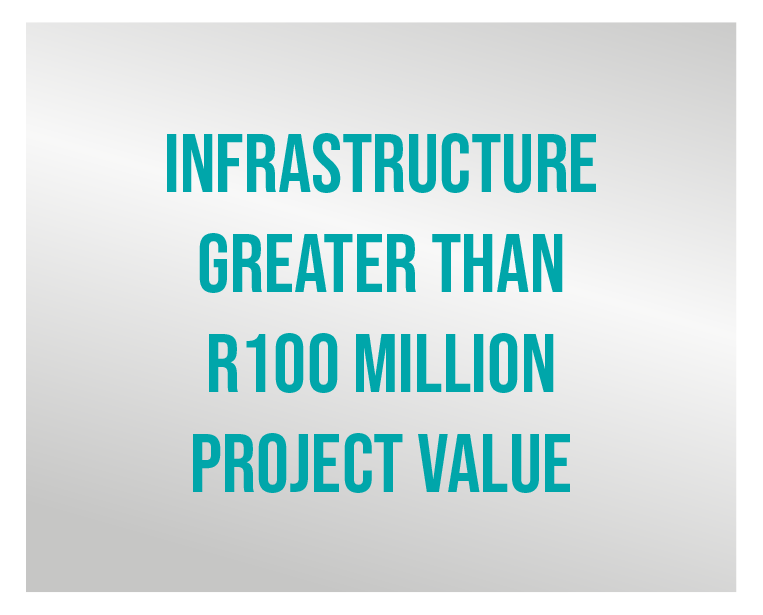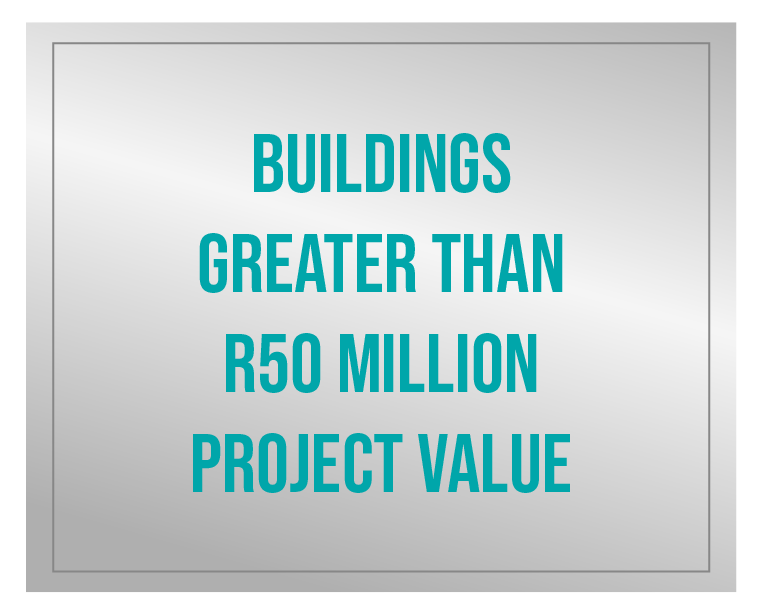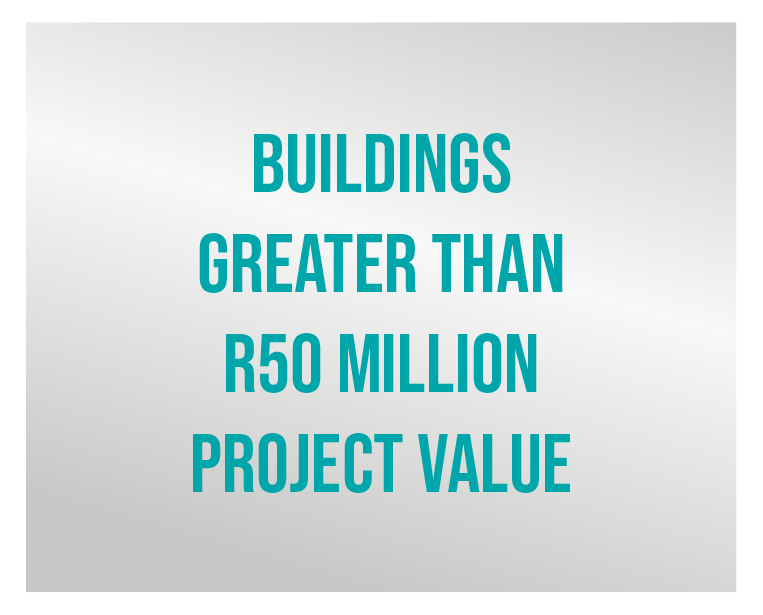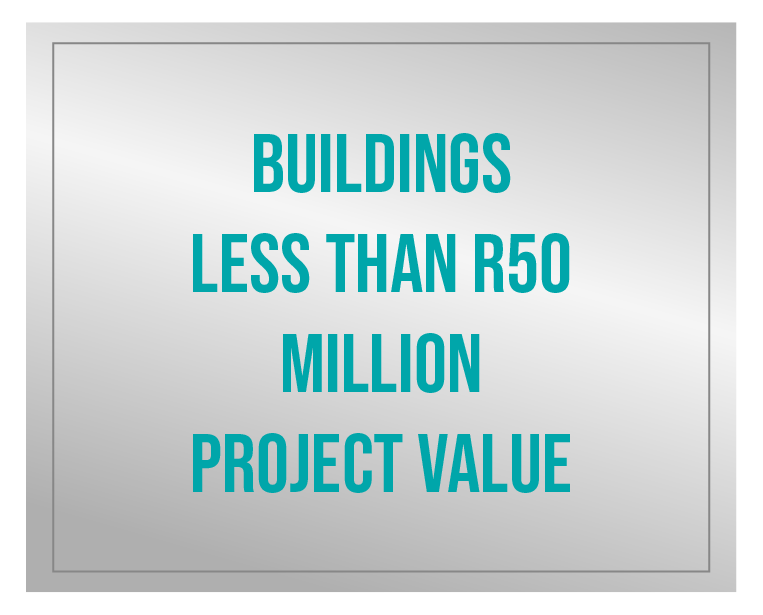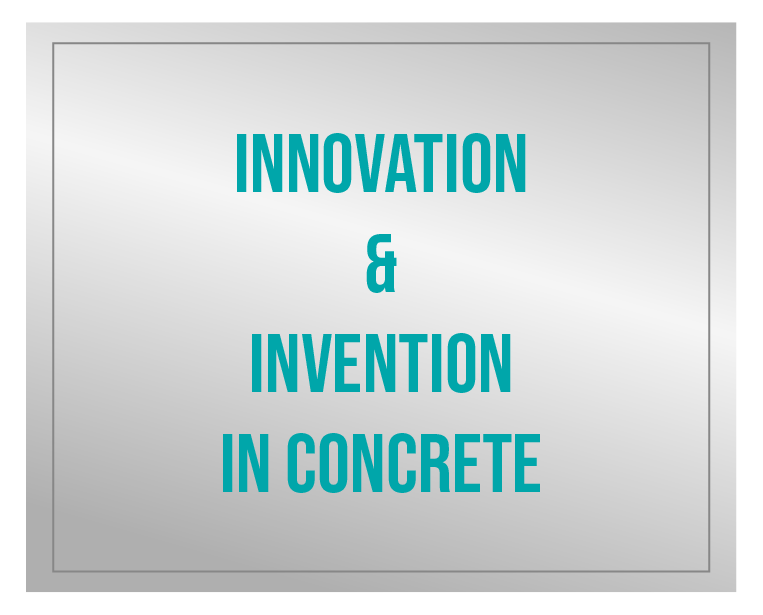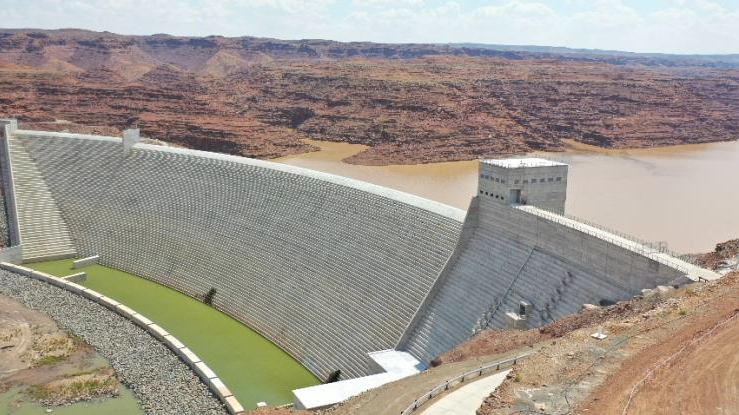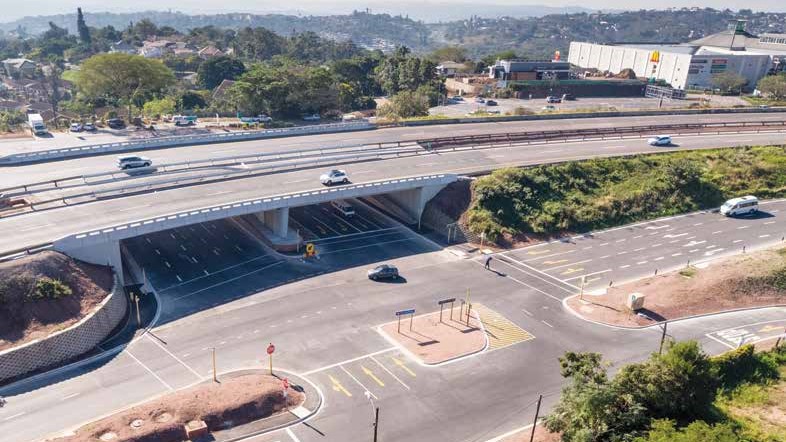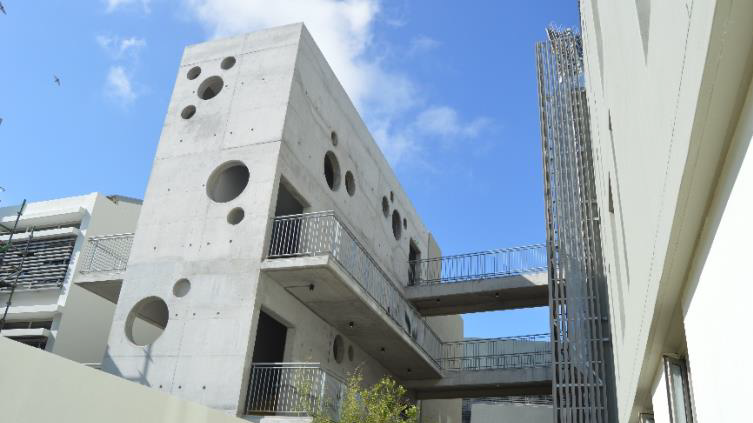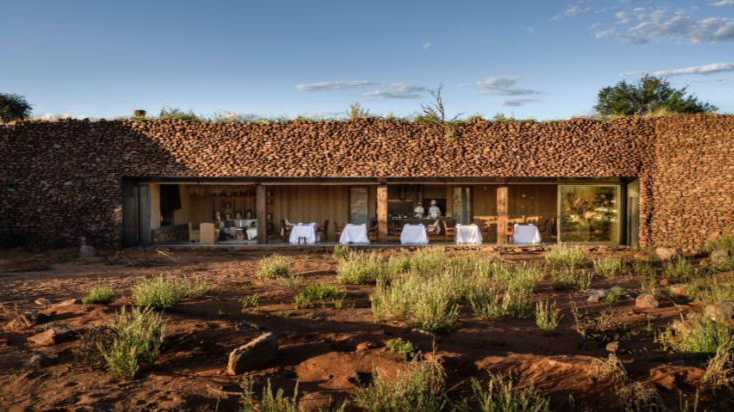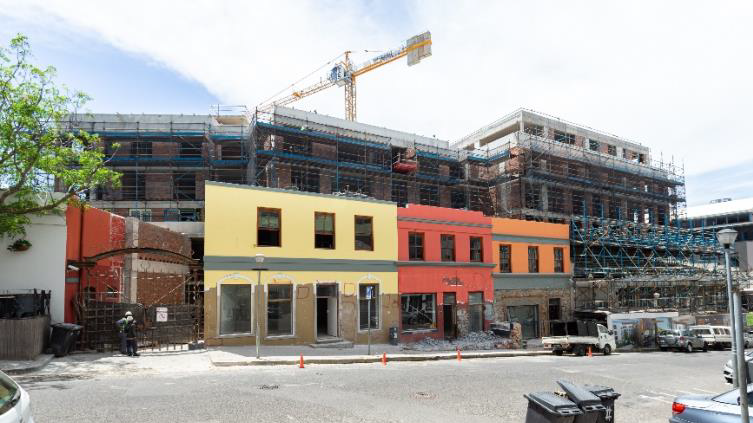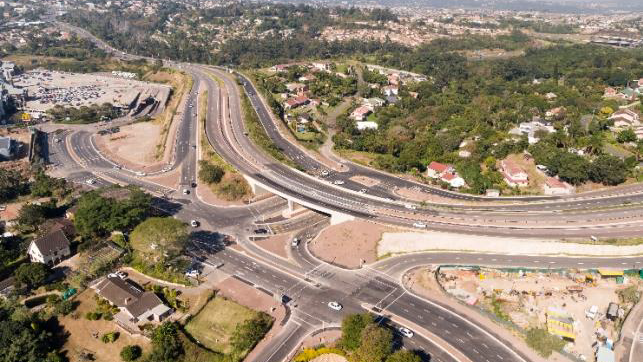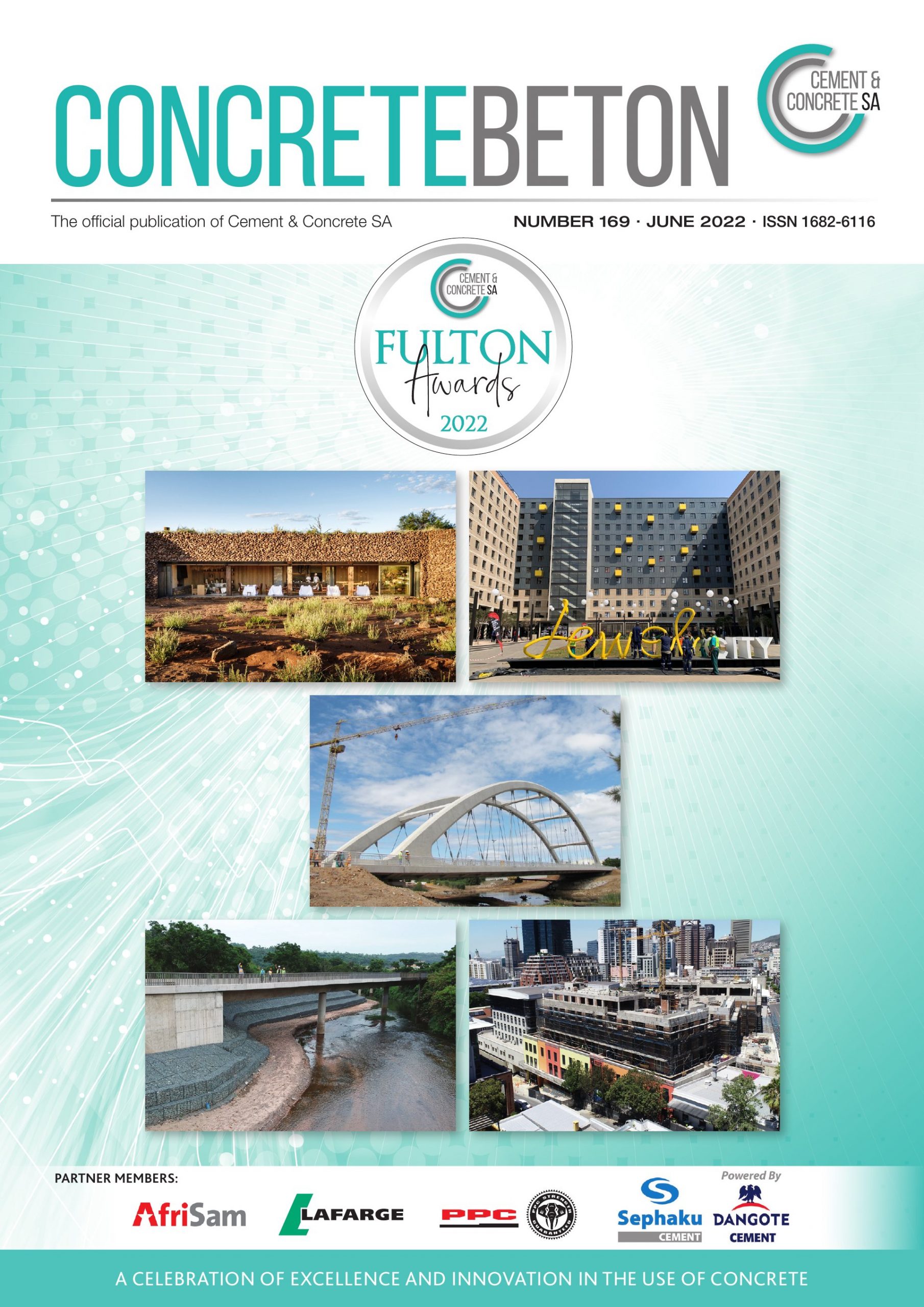
2022 Fulton Award Winners & Commendations
CATEGORIES
Infrastructure greater than R100 million project value
New Ashton Arch

TEAM
Location: Ashton, Western Cape
Categories Entered: Infrastructure > R100 Million Value | Innovation & Invention in Concrete
Submitted By: AECOM SA (Pty) Ltd
Client/Developer/Owner: Western Cape Government: Department of Transport and Public Works, Roads Branch
Project Manager/Principal Agent: AECOM SA (Pty) Ltd
Structural Designer: AECOM SA (Pty) Ltd
Main Contractor: Haw & Inglis Civil Engineering (Pty) Ltd
Specialist Sub-Contractor: Amsteele Systems (Pty) Ltd
Specialist Sub-Contractor: Allweld Marine & Industrial (Pty) Ltd
Specialist Sub-Contractor: Maffeis Engineering (Pty) Ltd
Specialist Sub-Contractor: Nyeleti Consulting (Pty) Ltd
Formwork Supplier: Form-Scaff (Pty) Ltd
Concrete Supplier: Afrimat Ready-mix Cape (Pty) Ltd
JUDGES’ CITATION:
The newly completed Ashton Arch is South Africa’s first concrete tiedarch bridge constructed using a transverse launching method. The bridge replaces an existing multi-arch bridge, built in the 1930’s, which did not fulfil its functional requirements, inter alia service life, width and hydraulic capacity, anymore.
The design which was finally adopted consisted of a single 110 m span concrete tied arch solution with a deck suspended by stay cables which accommodates four traffic lanes and two walkways. This largely eliminated the possibility of debris build up and provided the shallowest deck depth option.
Construction adjacent to existing bridge and transverse launching after completion minimized traffic disruption during construction.
Further, the tied-arch form expresses a visualisation of the flowing of forces through the arch ribs. The light hanger cables and slender structural members display transparency which is not excessively stimulating to the observer.
Extensive modelling and monitoring were carried out before and during construction and included various concrete mix designs.
The use of a transverse launching method for construction of a concrete tied-arch road bridge is a first in South Africa where more than 8000 tons of concrete and steel was moved over 24 m in less than 24 hours after several years of meticulous planning, design, and construction.
A further benefit of using concrete is that the method of construction is labour intensive, providing working opportunities for non-skilled workers in Ashton and surrounding communities.
A first and unique application of this bridge engineering technique for a concrete tied arch bridge in South Africa ensures that this is a deserved winner of the Fulton Award in the “Infrastructure over R100 million” category.
Infrastructure greater than R100 million project value
Neckartal Dam

TEAM
Location: Keetmanshoop, //Kharas Region, Namibia
Categories Entered: Infrastructure > R100 Million Value | Innovation & Invention in Concrete
Submitted By: Knight Piésold Consulting (Pty) Ltd
Client/Developer/Owner: Ministry of Agriculture, Water and Land Reform
Project Manager/Principal Agent: Knight Piésold Consulting (Pty) Ltd
Structural Designer: Knight Piésold Consulting (Pty) Ltd
Concrete Supplier: Salini Impregilo S.p.A.
JUDGES’ CITATION:
Neckartal Dam is one of the largest concrete structures constructed in southern Africa in recent years, primarily constructed of concrete with very few other construction materials. The project will supply bulk water to a new irrigation scheme located 40 km south-west of Keetmanshoop.
It is the largest dam in Namibia and the eighth largest dam in southern Africa by storage volume.
Neckartal Dam is a 78.5 m high roller compacted concrete dam, with a crest length of 518m and a gross storage capacity of 857 million m³.
Some 844 000 m³ of roller compacted concrete and approximately 110 000 m³ of conventional vibrated concrete were used to build the dam.
Managing logistics was challenging with the site located approximately 1 000 km from the nearest cement factory and 1 200 km from the closest fly ash sources. 116 000 tons of cement was required for the construction of Neckartal Dam. A key objective for the roller compacted concrete mix design was to reduce the cementitious content thereby reducing the overall project cost. This was achieved using low cementitious mixes for the dam core, cooling the aggregates and, by using retarders, reducing the set time. The low cementitious mixes contained either 85kg or 110kg of cementitious materials. A 3MW cooling plant was used to cool the coarse aggregate to achieve the placement temperature.
Meeting the challenges of constructing such a large project in such a remote location together with the innovations used earns a commendation in the category “Infrastructure over R100 million”.
Infrastructure greater than R100 million project value
Vlakfontein Reservoir

TEAM
Location: Benoni, Gauteng
Categories Entered: Infrastructure > R100 Million Value | Innovation & Invention in Concrete
Submitted By: Chryso SAF (Pty) Ltd
Client/Developer/Owner: Rand Water
Project Manager/Principal Agent: WBHO Construction (Pty) Ltd – NB – JV with Motheo Construction Group
Structural Designer: HGK Consulting cc
Concrete Supplier: PPC Ready-mix
JUDGES’ CITATION:
The Vlakfontein reservoir in Benoni, which will store 213.4 million litres of potable water, is the country’s largest cylindrical post-tensioned concrete reservoir. There were a number of concrete types used, including 8000 m³ of three different 15 MPa no-fines concretes in the underfloor drainage layer, 35 MPa concrete in the floor and columns and 45 MPa concrete in the walls.
The post-tensioned 45 MPa outer concrete walls are 11.8 m high, similar to a three-storey building. The walls are tapered from a thickness of 1 100 mm at the base to 300 mm at the top. It has an internal diameter of 154 m – the length of one and a half football fields – with 272 round reinforced 35 MPa concrete columns, 600 mm in diameter, to support the roof slab.
Extensive mix designs were carried out to reduce the shrinkage of the concrete to a minimum, maintaining the temperature of the concrete below 25 °C.
Care was taken to ensure good protection from drying and good curing. Measures included the use of fogging cannons and wrapping of concrete in plastic together with the use of wet geotextile.
This project is significant in its innovative use of concrete and for the large volume of concrete used. High ambient temperatures were a particular constraint, as were the strict slump requirements specified.
The challenge of building the country’s largest cylindrical post-tensioned concrete reservoir and addressing all the challenges this presented, deserve a commendation in the category “Infrastructure greater than R100 million”.
Infrastructure less than R100 million project value
Umhlatuzana River Bridge Modification

TEAM
Location: Durban, KwaZulu-Natal
Categories Entered: Infrastructure up to R100 Million Value | Innovation and Invention in Concrete
Submitted By: eThekwini Municipality, Roads Provision Department, Structures Branch
Client/Developer/Owner: eThekwini Municipality – Engineering Unit
Project Manager/Principal Agent: eThekwini Municipality, Roads Provision Department, Structures Branch
Structural Designer: eThekwini Municipality, Roads Provision Department, Structures Branch
Specialist Sub-Contractor: ICON Construction (Pty) Ltd
Specialist Sub-Contractor: Bloc Contractors
Specialist Sub-Contractor: Megapile
Specialist Sub-Contractor: Hlanganani Civils
Specialist Sub-Contractor: Post Tensioning & Structural Solutions (Pty) Ltd
Concrete Supplier: AfriSam South Africa (Pty) Ltd
JUDGES’ CITATION:
This project in eThekwini demonstrated the surprising extent to which a large, continuous, prestressed concrete bridge could be partially dismantled, modified from the original design, and rebuilt. Major challenges included:
• Supporting an unusually unstable structure through extreme and ongoing variations in loading and displacement
• Demolishing deck spans of a concrete bridge suspended over a sensitive waterway
• Reuse of prestress couplers by removing reinforced concrete meticulously and carefully to expose deeply buried couplers, so they could be safely reused to connect the new deck section to the retained deck section.
• Custom modifying and testing prestress components
• Applying a precisely limited prestress force to the new deck spans, to account for the age-related differences in concrete behaviour, and increase in length, of the reconfigured bridge.
The chosen solution was complex but left the existing footprint of the bridge for most of the watercourse unchanged, saved 850 m³ of concrete in the existing bridge, and avoided a larger demolition that would have destroyed nearby trees with nesting birds. All 620 m³ of demolished reinforced concrete was recycled in layerworks and abutment fill. Overcoming the above challenges with a unique solution earns this project a Fulton Award in the “Infrastructure under R100 million” category.
Infrastructure less than R100 million project value
Essex Terrace / M13 Bridge Modification

TEAM
Location: Durban, KwaZulu-Natal
Categories Entered: Infrastructure up to R100 Million Value | Innovation and Invention in Concrete
Submitted By: EMPA Structures / eThekwini Municipality, Roads Provision Department, Structures Branch
Client/Developer/Owner: eThekwini Municipality – eThekwini Transport Authority (ETA)
Project Manager/Principal Agent: eThekwini Municipality, Roads Provision Department
Structural Designer: eThekwini Municipality, Roads Provision Department, Structures Branch
Specialist Sub-Contractor: EMPA Structures (Pty) Ltd
Concrete Supplier: Lafarge South Africa (Pty) Ltd
JUDGES’ CITATION:
This project used several experimental solutions to support a design rationale that directly addressed sustainability concerns. It also involved some boldly progressive and effective responses to the aesthetic challenges associated with modification of an existing structure.
The new bridge span was built using a hybrid top-down, build-and-dig-out methodology, as an experimental project aimed to investigate the viability of this construction method in the future.
The new abutment is extremely mini-malist, being comprised of lightweight piles and soil nails rather than the conventional heavily reinforced concrete abutments which have much higher financial, time and sustainability costs.
The primary reason for the top-down approach was to minimise the time-consuming installation and subsequent demolition of expensive and wasteful temporary lateral support between the two carriageways, while the first deck was being constructed. This temporary lateral support was necessary because the two carriageways’ decks needed to be built separately, one at a time, so one of them could always remain open to reduce traffic disruption.
This project demonstrates the versatility of concrete for use in radically different construction systems. The result is a structure that lets its complex history be seen, but without being ill-fitting and ugly. It becomes a bridge with a story, and an organic life of its own. This also ties in with the agile look created by the raked bullnoses.
The successful experimental solutions applied on this project earn it a commendation in the “Infrastructure less than R100 million” category.
Buildings greater than R50 million project value
Jewel City – The Onyx

TEAM
Location: Johannesburg, Gauteng
Categories Entered: Buildings > R50 Million Value
Submitted By: EDS Engineering Design Services (Pty) Ltd
Client/Developer/Owner: Divercity Urban Property Fund/Ithemba Property/Atterbury Property Fund Project
Manager/Principal Agent: GASS Architecture Studios
Structural Designer: EDS Engineering Design Services (Pty) Ltd
Architect: GASS Architecture Studios
Specialist Sub-Contractor: WBHO Construction (Pty) Ltd
Concrete Supplier: AfriSam South Africa (Pty) Ltd
JUDGES’ CITATION:
The Onyx is a new 13 storey apartment building in Johannesburg and stands as the flagship new building in Jewel City’s redevelopment into a vibrant ‘Live, Work, Play’ precinct.
A concrete framed structure with concrete bearing walls makes up the main load bearing elements of the Onyx. Transfer beams enable vertical loads to be transferred at retail and parking levels to columns, allowing for a more open and flexible ground floor space. This load bearing system advantageously allows for repeatability during construction and one-way spanning slabs, resulting in a very efficient slab design. CFA friction piles provide the required support for poor soil conditions and ground water.
The aesthetic approach of the Onyx draws inspiration from the industrial presence of the surrounding context and celebrates the simplicity of warehouse architecture with an efficient and sophisticated solution. The building overlooks a new urban park with outdoor relaxation areas and multiple retail offerings.
It is one of six city blocks, previously part of the fortresslike Jewel City that once housed Johannesburg’s diamond dealers. It is an important addition to the city, opening up important pedestrian access along Fox Street, an area that was not previously easy to traverse safely on foot, while also bringing to market hundreds of new very cost-effective apartments aimed at those who live and work in the city.
This project is a deserved winner of the Fulton Award in the “Buildings greater than R50 million” category.
Buildings greater than R50 million project value
Newlands Cricket Ground Development

TEAM
Location: Cape Town, Western Cape
Categories Entered: Buildings > R50 Million Value
Submitted By: Stefanutti Stocks Western Cape
Client/Developer/Owner: Sanlam Life Insurance Limited & WPCA Property Holdings (Pty) Ltd
Development Manager: EDUDEV Africa (Pty) Ltd
Project Manager/Principal Agent: MDSA Project Management (Pty) Ltd
Structural Designer: Zutari (Pty) Ltd
Architect: Jakupa Architects and Urban Designers
Specialist Sub-Contractor: Viva Formwork & Scaffolding (Pty) Ltd
Concrete Supplier: Ciolli Readymix (Pty) Ltd
JUDGES’ CITATION:
The new development of 50 000 m² includes various parking levels, office spaces, educational block, a sports performance lab, a museum, conference centre, entrance block and a pedestrian bridge over the railway line. Various off-shutter concrete elements, designed to enhance the aesthetic and durability features of the development include:
• external public benches, stairs and walkways,
• stair 3, a 15-metre high element, positioned in the centre of the development,
• various façade pop-outs, portals, and plinths, and
• exposed aggregate polished concrete floors in numerous internal spaces.
The project’s position within the existing precinct and the continued operation of the cricket stadium, meant that space on the site was extremely limited and logistics were very challenging. The 32 000 m³ of concrete was batched off site and trucks entered the site through a small access road. The concrete was then either pumped, transported in small dumpers or craned to its final position, sometimes using three successive tower cranes. Most of the concrete was pumped with a static concrete pump through pipelines up to 360 metre in length. On-site storage space for reinforcing was also limited, and an arrangement with the steel bending yard was made to cut, bend and deliver reinforcing within two to three days, which enabled just-in-time deliveries. In most cases steel was hoisted directly from the delivery truck onto the construction area and no “stock-steel” was kept on site. The project achieved over 1,5 million injury free man hours, with over 400 workers on site daily during peak periods. This project has made significant sustainability achievements, especially in terms of water, energy and waste and is registered for a Green Star SA certification with the Green Building Council of South Africa. The impressive way that the various challenges were met, and the final product achieved earns a commendation in the “Buildings greater than R50 million” category.
Buildings greater than R50 million project value
Sol Tech Training College

TEAM
Location: Pretoria, Gauteng
Categories Entered: Buildings > R50 Million Value
Submitted By: Jeremie Malan Architects & Interiors
Client/Developer/Owner: Kanton
Project Manager/Principal Agent: Pro Arnan Project Management
Structural Designer: DG Consulting Engineers
Architect: Jeremie Malan Architects & Interiors
Specialist Sub-Contractor: JC van der Linde & Venter Projects
Specialist Sub-Contractor: Structural Precast Elements CC
Concrete Supplier: Quantum Ready Mix Concrete
JUDGES’ CITATION:
The design concept follows the “Pretoria Regionalist Style”, which developed after the Second World War to trigger large-scale development in the South African inland regions.
The following characteristics were used in the design:
• Use of in-situ concrete and prefabricated concrete panels as a structural and an aesthetic finish.
• Roof overhangs and shaded porches.
• Window openings that are protected from the sun with protruding, lintels, fins, and columns.
• Architectural language that respects climatic conditions such as north/south elevations, sun control and shading.
• Prefabricated concrete use in windowsills, lintels, and canopies.
The ground conditions are dolomitic resulting in the need to adhere to many stormwater and sewerage disposal requirements. The site is located on the harsh highveld and therefore, the buildings are grouped together for protection of users against heat, cold and wind.
To maintain a comfortable temperature range internally, the need for auxiliary heating and or cooling was reduced. Less than 35% of the buildings are mechanically ventilated, and all is complaint with SANS 10400. A Building Management System (BMS) controls power and HVAC usage to the campus, preventing any wastage or excess usage by the users.
Buildings less than R50 million project value
KleinJAN Restaurant

TEAM
Location: Tswalu, Northern Cape
Categories Entered: Buildings up to R50 Million Value
Submitted By: Kobus Duvenhage Bouers (Pty) Ltd
Client/Developer/Owner: Restaurant JAN
Project Manager/Principal Agent: Tswalu Kalahari Reserve
Structural Designer: MVD Kalahari Consulting Civil & Structural Engineers
Architect: Savile Row Tailored Environments
Concrete Supplier: Olivier Construction (Concrete Division)
JUDGES’ CITATION:
Patrons are welcomed into the diminutive 100-year-old farm homestead, “Boscia House”, yet the main restaurant is still totally invisible, as it is submerged into the earth, and only reveals itself when you enter the concealed door in the side of an old water reservoir.
In this project, the concrete innovation is concealed in the earth. Concrete was used to structurally bind all spaces together but also to cater for thermal performances, from the reservoir entrance to the wine and root cellars and finally the main restaurant.
The restaurant was essentially built as a reinforced underground reservoir not to contain water from the inside but the outside only. The structure, therefore, had to withstand dead loads from the sand and live large animals like buffalo herds as well as consideration of buoyancy during flooding.
The circular water reservoir en-trance to the restaurant with a spiral staircase was also designed as an underground reservoir. In the base, a water pool was formed in the reinforced base with a pump circulating the water to the roof, thus dripping in a circular form from the roof creating a “petrichor” effect. The service kitchen and cellar passage to the restaurant underground was lined with reinforced concrete retaining walls on both sides.
Klein Jan is the deserved winner of the 2022 Fulton Awards in the “Building less than R50 million” category, not for its objective visible concrete interventions but rather its concealed hidden pragmatic innovation situated in the vast open Kalahari Desert savannah.
Innovation & Invention in Concrete
Old Cape Quarter

TEAM
Location: Cape Town, Western Cape
Categories Entered: Buildings > R50 Million Value | Innovation & Invention in Concrete
Submitted By: AfriSam South Africa (Pty) Ltd
Client/Developer/Owner: The Cape Quarter Property Company (Tower)
Principal Contractor: GVK-Siya Zama Building Contractors (Pty) Ltd
Project Manager/Principal Agent: Igual Project Managers (Pty) Ltd
Structural Designer: Sutherland Engineers (Pty) Ltd
Architect: DHK Architects
Quantity Surveyors: Smith & Co (Pty) Ltd
Specialist Sub-Contractor: VSL Construction Solutions (Pty) Ltd
Specialist Sub-Contractor: Franki Afrika (Pty) Ltd
Specialist Sub-Contractor: Siyazama Steel (Pty) Ltd
Concrete Supplier: AfriSam South Africa (Pty) Ltd
JUDGES’ CITATION:
The redevelopment of the Old Cape Quarter includes the partial demolition of the existing building to strengthen its structure, and the addition of a modern four-storey residential component of brickwork.
A significant aspect of the innovation on the project arose from having to work within the existing bases and columns in the structure – many of which were no longer fit for purpose. Some had to be demolished and reconstructed, with props required where they were removed.
The lack of space in the basement for the use of normal class 3 formwork led to the extensive use of biscuit columns, where reinforcing around the existing column was added using grout to build up the column sizes.
The concrete for the biscuit columns had to be poured through 60mm core holes from the slab above. This could only be done manually by wheelbarrow, severely restricting the operation’s capacity to relieve the readymix trucks of their usual six to eight cubic metre load. Subsequently 153 m³ of concrete was delivered in 1 m³ batches in readymix trucks. This added to traffic congestion in the narrow streets.
The innovative solutions involved considerably more work and materials. The initial bill of quantities specified about 4 000 dowels, while the final requirement was closer to 12 000 dowels. The project also used most of the epoxy in the Cape Town market and demanded many more props than anticipated.
Three existing heritage buildings around the site had to be accommodated which meant preserving and protecting the outer heritage walls of the existing structure, which date back about a hundred years. A number of existing structures were not allowed to impacted, while others were made more structurally sound.
The innovative ways that all these significant challenges were met has made this project a winner in the category “Innovation and Invention”.
Innovation & Invention in Concrete
New Ashton Arch

TEAM
Location: Ashton, Western Cape
Categories Entered: Infrastructure > R100 Million Value | Innovation & Invention in Concrete
Submitted By: AECOM SA (Pty) Ltd
Client/Developer/Owner: Western Cape Government: Department of Transport and Public Works, Roads Branch
Project Manager/Principal Agent: AECOM SA (Pty) Ltd
Structural Designer: AECOM SA (Pty) Ltd
Main Contractor: Haw & Inglis Civil Engineering (Pty) Ltd
Specialist Sub-Contractor: Amsteele Systems (Pty) Ltd
Specialist Sub-Contractor: Allweld Marine & Industrial (Pty) Ltd
Specialist Sub-Contractor: Maffeis Engineering (Pty) Ltd
Specialist Sub-Contractor: Nyeleti Consulting (Pty) Ltd
Formwork Supplier: Form-Scaff (Pty) Ltd
Concrete Supplier: Afrimat Ready-mix Cape (Pty) Ltd
JUDGES’ CITATION:
The newly completed Ashton Arch is South Africa’s first concrete tiedarch bridge constructed using a transverse launching method. The bridge replaces an existing multi-arch bridge, built in the 1930’s, which did not fulfil its functional requirements, including service life, width and hydraulic capacity, anymore.
The design which was finally adopted consisted of a single 110 m span concrete tied arch with a deck suspended by stay cables which accommodates four traffic lanes and two walkways. This largely eliminated the possibility of debris build up and provided the shallowest deck depth option.
Construction adjacent to the existing bridge and transverse launching after completion minimized traffic disruption during construction.
Extensive modelling and monitoring were carried out before and during construction and included various concrete mix designs. Further structural monitoring was done in collaboration with the University of Cape Town’s COMSIRU and included strain measuring at vulnerable zones and hanger force measurement.
The use of a transverse launching method for construction of a concrete tied-arch road bridge is a first in South Africa when more than 8000 tons of concrete and steel was moved over 24m in less than 24 hours after several years of meticulous planning, design and construction.
A first and innovative application of this bridge engineering technique for a concrete tied arch bridge in South Africa ensures that this project deserves a commendation in the category “Innovation and Invention in Concrete”.
Innovation & Invention in Concrete
Essex Terrace / M13 Bridge Modification

TEAM
Location: Durban, KwaZulu-Natal
Categories Entered: Infrastructure up to R100 Million Value | Innovation and Invention in Concrete
Submitted By: EMPA Structures / eThekwini Municipality, Roads Provision Department, Structures Branch
Client/Developer/Owner: eThekwini Municipality – eThekwini Transport Authority (ETA)
Project Manager/Principal Agent: eThekwini Municipality, Roads Provision Department
Structural Designer: eThekwini Municipality, Roads Provision Department, Structures Branch
Specialist Sub-Contractor: EMPA Structures (Pty) Ltd
Concrete Supplier: Lafarge South Africa (Pty) Ltd
JUDGES’ CITATION:
This project used several experimental solutions to support a design rationale that directly addressed sustainability concerns. It also involved some boldly progressive and effective responses to the aesthetic challenges associated with modification of an existing structure.
The new bridge span was built using a hybrid top-down, build-and-dig-out methodology, as an experimental project aimed to investigate the viability of this construction method in the future.
The new abutment is extremely minimalist, being comprised of lightweight piles and soil nails rather than the conventional heavily reinforced concrete abutments which have much higher financial, time and sustainability costs.
The primary reason for the top-down approach was to minimise the time-consuming installation and subsequent demolition of expensive and wasteful temporary lateral support between the two carriageways, while the first deck was being constructed. This temporary lateral support was necessary because the two carriageways’ decks needed to be built separately, one at a time, so one of them could always remain open to reduce traffic disruption.
This project demonstrates the versatility of concrete for use in radically different construction systems. The result is a structure that lets its complex history be seen, but without being ill-fitting and ugly. It becomes a bridge with a story, and an organic life of its own. This also ties in with the agile look created by the raked bullnoses.
The successful experimental solutions applied on this project earn it a commendation in the “Innovation and Invention in Concrete” category.
CONCRETE BETON
A celebration of excellence and innovation in the use of concrete!
Excellence is what this issue of Concrete Beton is all about. We showcase the 24 entries received for the 2022 Fulton Awards.


